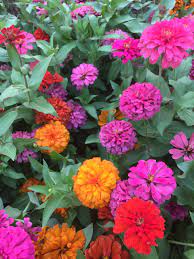**Traditional Tools and Techniques for Caring for Chrysanthemums**

Chrysanthemums, with their intricate blooms and delicate foliage, require meticulous care to thrive and flourish. Throughout history, gardeners have developed a variety of traditional tools and techniques to nurture these beloved flowers. This section explores some of the time-honored practices and implements used in the care and cultivation of chrysanthemums.
**1. Soil Preparation:**
Traditional chrysanthemum cultivation begins with soil preparation. Gardeners often use a combination of organic matter, such as compost or well-rotted manure, to enrich the soil and improve its structure. Deep digging and thorough soil aeration promote root development and ensure adequate drainage, essential for preventing waterlogging and root rot.
**2. Planting Techniques:**
When planting chrysanthemums, traditional techniques focus on spacing, depth, and soil firmness. Gardeners typically space chrysanthemum plants at least 18 to 24 inches apart to allow for adequate air circulation and minimize competition for nutrients. Planting depth is crucial, with the crown of the plant positioned just above the soil surface to prevent rotting. After planting, gently firming the soil around the base of the plant helps provide stability and support.
**3. Watering Methods:**
Traditional watering methods for chrysanthemums emphasize thorough yet gentle irrigation. Watering is typically done at the base of the plant to avoid wetting the foliage, which can lead to fungal diseases. During periods of active growth, chrysanthemums benefit from deep, infrequent watering to encourage deep root development and drought tolerance. Traditional techniques may include using watering cans or soaker hoses to deliver water directly to the root zone.
**4. Pruning and Training:**
Pruning and training are essential aspects of chrysanthemum care, promoting healthy growth and abundant flowering. Traditional pruning techniques involve removing spent blooms, dead or diseased foliage, and weak or overcrowded stems to improve airflow and reduce the risk of pests and diseases. Gardeners may also use traditional training methods, such as staking or pinching, to encourage bushy growth and control plant shape and size.
**5. Pest and Disease Management:**
Traditional pest and disease management strategies for chrysanthemums often rely on cultural practices and natural remedies. Regular inspection and early detection of pests and diseases are key components of traditional care. Gardeners may employ techniques such as hand-picking pests, applying organic insecticides or fungicides, and practicing crop rotation to minimize the buildup of pathogens in the soil.
**6. Winter Protection:**
In regions with cold winters, traditional techniques for protecting chrysanthemums from frost and freezing temperatures include mulching, covering, and overwintering. Gardeners may apply a layer of mulch around chrysanthemum plants to insulate the soil and regulate temperature fluctuations. During extreme cold spells, covering chrysanthemums with frost cloth or burlap can provide additional protection from freezing winds and frost damage. Overwintering techniques, such as lifting and storing chrysanthemum roots indoors, are also common in colder climates.
**Conclusion:**
Traditional tools and techniques play a vital role in the care and cultivation of chrysanthemums, preserving centuries-old wisdom and knowledge passed down through generations of gardeners. By embracing these time-honored practices, gardeners can ensure the health, vitality, and beauty of chrysanthemum plants for generations to come.
**Part 2: Traditional Tools and Techniques for Caring for Chrysanthemums**
In continuation of our exploration into the traditional methods of nurturing chrysanthemums, let’s delve deeper into some more tools and techniques that have stood the test of time in ensuring the health and beauty of these exquisite flowers.
**7. Feeding and Fertilization:**
Traditional fertilization methods focus on providing chrysanthemums with balanced nutrition to support vigorous growth and prolific flowering. Gardeners often use organic fertilizers, such as compost tea, fish emulsion, or bone meal, to supply essential nutrients to the soil. Application rates and timing are carefully calibrated to coincide with the plant’s growth stages, with additional fertilization during the growing season to replenish nutrients depleted by blooming.
**8. Propagation Practices:**
Traditional propagation techniques enable gardeners to multiply chrysanthemum plants while preserving their desirable characteristics. Common methods include division, stem cuttings, and layering. Division involves separating mature clumps into smaller sections, each containing roots and shoots, which are then replanted to establish new plants. Stem cuttings are taken from healthy, actively growing shoots and rooted in a suitable growing medium. Layering involves bending a flexible stem to the ground, where it forms roots before being severed from the parent plant.
**9. Companion Planting:**
Traditional companion planting methods harness the beneficial interactions between chrysanthemums and other plant species to enhance overall garden health and productivity. Chrysanthemums are often paired with companion plants that repel pests, attract beneficial insects, or provide complementary benefits. For example, planting chrysanthemums alongside aromatic herbs like lavender or mint can help deter pests, while interplanting with nitrogen-fixing legumes like clover can enrich the soil and promote healthy growth.
**10. Harvesting and Preservation:**
Traditional harvesting techniques ensure the timely and careful collection of chrysanthemum blooms for various purposes, including floral arrangements, herbal remedies, and culinary uses. Flowers are typically harvested when they are fully open but before they begin to fade. Cut stems are trimmed at an angle and immediately placed in a container of water to prolong their freshness. Traditional preservation methods, such as air-drying or pressing, allow gardeners to enjoy chrysanthemum blooms long after the growing season has ended.
**11. Cultural Significance:**
Beyond their practical applications, traditional tools and techniques for caring for chrysanthemums hold cultural significance and are deeply ingrained in gardening traditions around the world. They reflect the wisdom, ingenuity, and reverence that cultures have long held for these captivating flowers, which symbolize longevity, resilience, and beauty in many societies.
**Conclusion:**
Traditional tools and techniques continue to play a vital role in the care and cultivation of chrysanthemums, preserving valuable knowledge and practices that have been passed down through generations. By embracing these time-honored methods, gardeners can foster a deeper connection to the natural world and cultivate a sense of stewardship for these beloved flowers, ensuring their continued beauty and significance for years to come.

